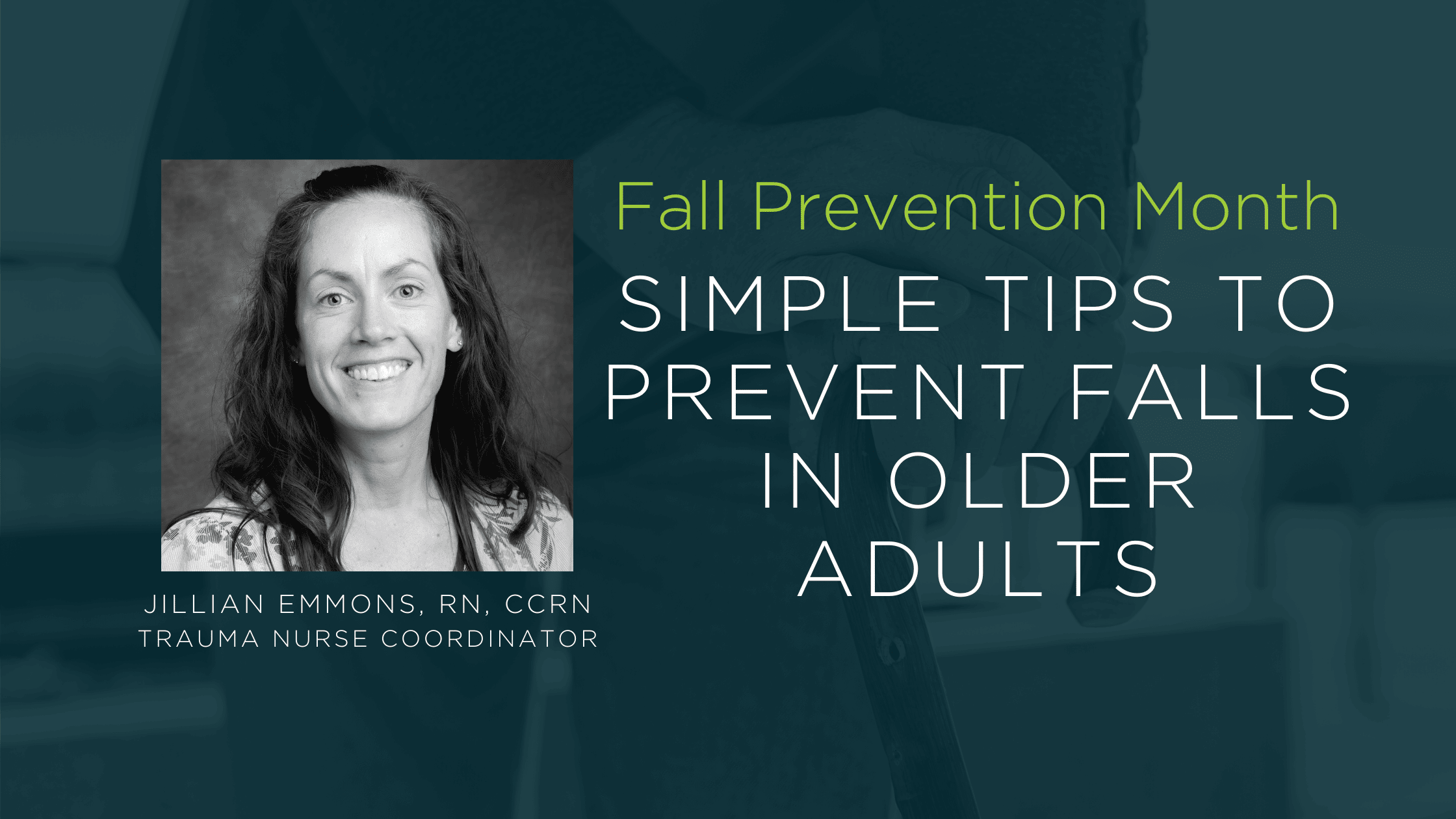By Jillian Emmons, RN, CCRN
According to the Centers for Disease Control (CDC), each day, more than 10,000 people over the age of 65 experience a ground-level fall. The National Council of Aging, Falls Free Initiative, says that an older adult dies from a fall every 20 minutes. And every 13 seconds a patient is treated in the emergency department from a fall-related injury. At Delta Health (Delta Health), 65% of all traumas that presented to the emergency room in 2019 were from ground-level falls. These numbers are alarming and continue to increase each year.
September is Fall Prevention Month and Sept. 22 is National Fall Prevention Day. Experiencing a fall is not a normal part of aging. There are many ways falls can be prevented. Knowing risk factors is the first step in maintaining your independence.
What are the risk factors?
• Over the age of 55
• Experienced a previous fall
• Have an injury from a previous fall
• Taking medications that affect mood, sleep or balance
• Unsteady on your feet
• Experience lightheadedness upon standing
• Experience vision loss
• Have a fear of falling
If you have any of these risk factors, you may be at risk for falling. But it is not too late. Being proactive is the key to keeping yourself safe and independent. Studies have shown with a little work you can decrease your risk of falling by at least 30% by staying active.
How to decrease your risk of falling
There are several ways to decrease your risk of falling. First, contact your primary care provider to make sure you are ready to engage in new activities. Several things can be evaluated: medications, potential hazards in your home, blood pressure, your feet, etc. Your doctor or another trained professional can put you through a few simple screening tests on your walking, strength and balance. They may recommend an in-house evaluation to identify risk factors in your home. They may also recommend a follow-up with Physical Therapy and Rehabilitation Professionals to assist in identifying risk factors and to start working on building strength and increasing mobility.
Here in Delta County, there are several community opportunities to increase strength and mobility. As a Medicare recipient, you can receive a free Medicare Wellness Screening with one of our registered nurses through Care Coordination at Delta Health primary care clinics. During your visit, you will go through some of these screenings and the necessary recommendations will be provided to your health care provider for further treatment if needed.
At home, you can evaluate for risks, look for items that may cause a tripping hazard such as throw rugs, items on the floor, poor lighting around stairs or near the bathroom, or broken steps. Falls can also occur from loose footwear, not using walking aids, lack of handrails next to steps or in the bathroom and animals underfoot. All of these things are known to cause falls.
Exercises to help decrease your risk of falling
Exercise is also very important for your body to stay healthy. According to the Department of Health and Human Services, the “Move Your Way” program recommends those over 65 to stay active with moderate intensity activities for at least 150 minutes a week. They also encourage muscle-strengthening activities at least twice a week.
“Consistency is key [when starting a new exercise],” said Dr. Brian Burkhardt, a doctor in the field of Physical Therapy at Delta Health Rehabilitation. Burkhardt is passionate about fall prevention and has a few exercises to increase balance and strength that you can start at home. Please consult your physician before trying any of these exercises.
1. Sit to Stand repeats — Practice standing up and slowly sit back down into a sturdy chair; try not to use your arms and focus on strengthening the legs (assist with hands-on armrests as needed). Shoot for doing 3 sets of 5-10 reps.
2. Single leg balance — Stand in a safe location (in an empty corner or at the counter with a chair right behind you).
Step 1: Begin by practicing marching in place with both hands on the counter/wall. If this is easy and you feel stable, progress to using fingertips only, then try with no hands.
Step 2: Slow you’re marching down and try to stand on each leg for 5-10 seconds. Again, begin with both hands on the counter then progress the exercise. If this is easy and you feel safe and stable, try using one hand on the counter or wall, then progress to using fingertips, then no hands. Shoot for 10 repetitions, on to two times a day.
With the increasing number of falls in the last several years, we want to use this information to help prevent those falls from happening in our community and to see those numbers go down.
For more information on the Fall Prevention services available at Delta Health and for further recommendations on decreasing your risk of falls, contact your Delta Health Primary Care Provider or visit deltahealthco.org.
Jillian Emmons, RN, CCRN, is the Trauma Nurse Coordinator at Delta Health.


